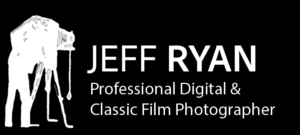OTTAWA NATURE/ SCENIC / LIFESTYLE/ PROFESSIONAL PHOTOGRAPHER/INCLUDING FAIRY/ FASHION/MODELLING PORTFOLIOS/KANATA/BARRHAVEN/MANOTICK/ORLEANS/STITTSVILLE
OTTAWA PHOTOGRAPHER NATURE FIELDTRIP/FILM/DIGITAL/ 5 STAR /FAIRIES/ PROFESSIONAL PHOTO STUDIO/ FAIRY PORTRAIT STUDIO/ GRAD PHOTO/ HEAD SHOT
MAY 2023
Getting Down To Earth :):)
Hello Ladies & Gentlemen:
Now that Spring has provided us with an enormous amount of colour to choose from, it seems appropriate for me to comment on the photography of flowers, in particular, tulips.
Being a long time resident of Ottawa, I had the opportunity recently to stroll through the most attractive beds of tulips situated in the vicinity of Dow’s Lake. Arriving early to an area like this is the only way to address the construction of solid flower compositions. What I am referring to in particular is….. a person has a most difficult time avoiding excessive crowds of people entering your compositions. One has to make the effort to rise early prior to the arrival of quite literally, thousands of tourists and of course, residents of the city included.
I have photographed this area on countless occasions and without doubt have recognized a repeating pattern of “picture takers”. This being, the majority of individuals are generally standing fully upright or slightly bent forward. I often wonder why people are not willing to explore objects from other vantage points and open a completely new perspective on visualization. I will often adopt the attitude of this………insects are frequently looking upwards at tulips, and spiders have regularly built their webs attached from one flower stem to another which a person would never see when towering above them. The point here should be obvious meaning, get yourself a good steady tripod and high quality close up lens equipment and start exploring the flowers from an insects point of view. I generally use a very good quality “macro or often called, micro lens” which enables very good, structured compositions. When your lens is tripod mounted which guarantees excellent image composition, allow the flowers petals, stems, spiders webs etc to brush up on the front of your lens creating a vignette of remarkable colour. At this point, you can choose to ignore this vignette pattern and focus on another object farther away from you creating a strong centre-pointe area of attention. I can assure you the imagery will become enhanced with a flourish of colour celebrating the blossoms of spring much more so than objects that did not receive this attention.
If you have the luxury of visiting the area you choose to photograph in often, prior to the actual blossoms opening, this can only be to your advantage because you will be able to make excellent decisions regarding your lighting. This is important! So many objects that we wish to make pictures of are enhanced to their fullest extent by side or back lighting. Front lighting has a tendency to wash out spectacular areas of colour leaving a washed out appearance to imagery. Side lighting creates a wonderful three dimensional feeling in your photography and back lighting will enhance to a further degree the stunning amount of colour generated by each petal. Occasionally some of my students will question if I have placed coloured filters on the camera lens to enhance the imagery and this is something I have never done. After taking a meter reading of the scene, I will often underexpose the image slightly to increase the colour saturation and contrast of the scene but I do this with minor intention. Too much underexposure will cause shadow areas to have no detail and overexposure should you go that way, will most definitely add excessive areas of white light to the scene making correction of the finished photograph very difficult. Highlights will block up and contain very little image detail.
I would like to encourage all of you to equip yourselves with the gear I mentioned previously if possible, and the technique of getting right down to the earths level when making photographs. I carry with me simple objects in my camera bag such as a large green garbage bag to lay on should the rain have wet the grass area, and another object that will be so handy for you is a piece of crinkled tin foil! Yes indeed! This crinkled up piece of tin foil can be used as an excellent “fill light” source when doing close ups. Mine is simply mounted onto a piece of discarded cardboard that can be opened to roughly 8 x 10” in size. I can’t tell you how often this simple prop has “opened up shadow areas” and created an entirely new photograph for me. You do not need to purchase expensive reflectors from photo outlets. There are always opportunities for those who are willing to invest the necessary time to advance themselves photographically. Be explorative in your image creating process. Break conventional rules and stroll through new territory.
Let me extend my best wishes to all of you at this time for a productive Spring filled image creation season!
With Good Wishes Extended,
Jeff Ryan Photography/Ryan Studio Ottawa
www.jeffryan-photography.com
Facebook Jeff Ryan Photography Ottawa
